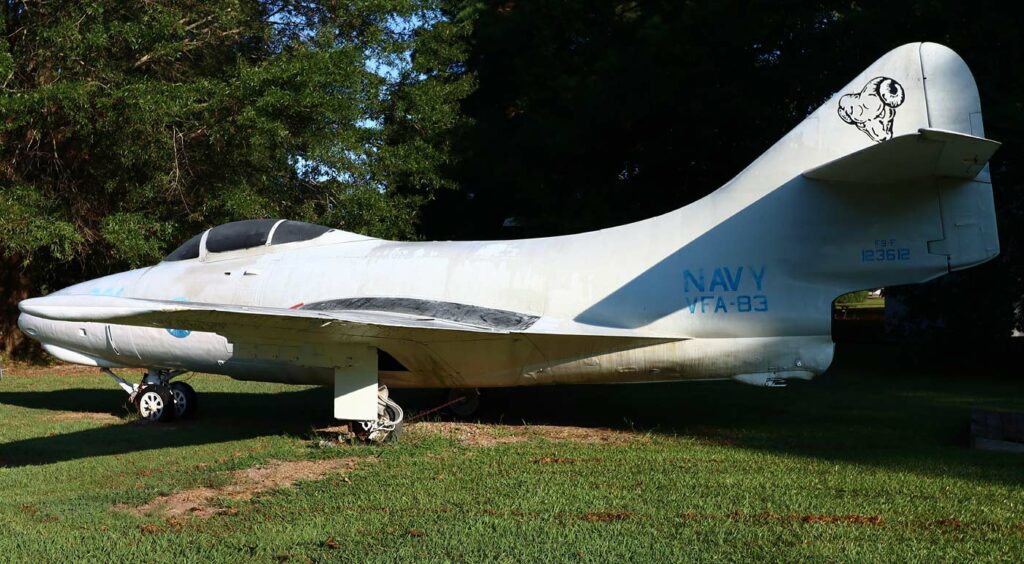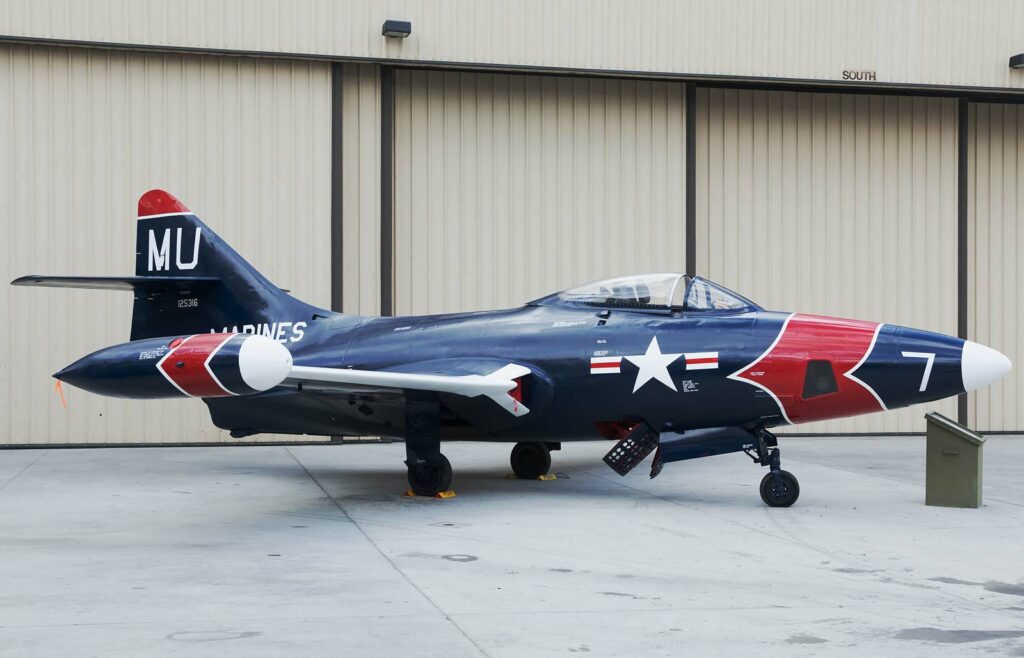The F9F Panther, Grumman’s first jet fighter, was a key U.S. Navy aircraft in the Korean War, known for its reliability and effectiveness.
In brief
The Grumman F9F Panther, operational in the early 1950s, was the U.S. Navy’s first successful carrier-based jet fighter. Renowned for its sturdiness and ease of operation, the Panther played a significant role during the Korean War. It featured a straight-wing design and was powered by a Pratt & Whitney J42 turbojet engine, a license-built version of the Rolls-Royce Nene. The F9F was known for its excellent low-speed handling, crucial for carrier operations. Its armament included cannons and air-to-ground ordnance, making it versatile in both air-to-air combat and ground attack missions. While it was eventually outclassed by faster, more agile swept-wing aircraft, the Panther was a critical step in naval aviation’s transition to jet power.
The Grumman F9F Panther symbolizes the United States Navy’s transition into the jet age, playing a pivotal role in post-World War II aviation.

History of the Development of the Grumman F9F Panther
In the aftermath of World War II, the U.S. Navy sought to integrate jet-powered aircraft into its fleet to keep pace with advancing aviation technology. Grumman, a company with a strong legacy in carrier-based aircraft, initiated the F9F Panther project to meet this need.
The development of the F9F was driven by the Navy’s requirement for a reliable, carrier-capable jet fighter. The program was launched in the late 1940s, with the first Panther flying on November 24, 1947.
This jet did not have a specific NATO nickname but was a prominent figure in the U.S. Navy’s air wings during its service.
Design of the Grumman F9F Panther
The Panther’s design was characterized by its simplicity and robustness. It featured a conventional straight-wing configuration, which, while limiting its top speed, provided excellent stability and handling at low speeds – a necessity for carrier landings and takeoffs.
Powered by a Pratt & Whitney J42 engine, the F9F had a maximum speed of around 575 mph. Its airframe was durable, capable of withstanding the rigors of carrier operations. The Panther measured 11.4 meters (37 feet) in length with a wingspan of 11.6 meters (38 feet).
The aircraft’s main drawbacks were its relatively limited speed and altitude capabilities compared to newer, swept-wing jet fighters.
Performance of the Grumman F9F Panther
The F9F Panther’s performance was notable for its era. It could achieve a maximum speed of about 925 km/h (575 mph) and had a service ceiling of approximately 12,800 meters (42,000 feet). The Panther’s range was around 2,100 kilometers (1,300 miles), adequate for its time.
In comparison to contemporaries like the MiG-15, the Panther was slower and less agile at high altitudes but excelled in durability and ease of carrier operations.
Variants of the Grumman F9F Panther
The F9F Panther series included several variants:
- F9F-2: The initial production model.
- F9F-3: Equipped with a different engine, the Allison J33.
- F9F-4 and -5: Featured an extended fuselage and increased fuel capacity.
Each variant offered incremental improvements, adapting to evolving operational requirements.

Military Use and Combat of the Grumman F9F Panther
The Panther was armed with four 20 mm cannons and could carry bombs and rockets. Its primary role was as an air-to-ground attack aircraft, though it was also capable in air-to-air combat.
The F9F saw extensive action in the Korean War, proving its worth in both ground attack and air superiority missions. It was one of the main U.S. Navy aircraft used during the war, credited with downing several enemy aircraft.
While the Panther was outperformed by more advanced aircraft in later years, such as the F-86 Sabre, it remained a valuable asset to the U.S. Navy until it was replaced by more capable models like the Grumman F9F Cougar.
The Grumman F9F Panther played a crucial role in the history of naval aviation. As the U.S. Navy’s first successful jet fighter, it bridged the gap between propeller-driven and jet-powered aircraft aboard carriers. Its performance in the Korean War and contribution to the development of naval air tactics cemented its place as a significant aircraft in military aviation history.
Back to the Fighter Jet section.